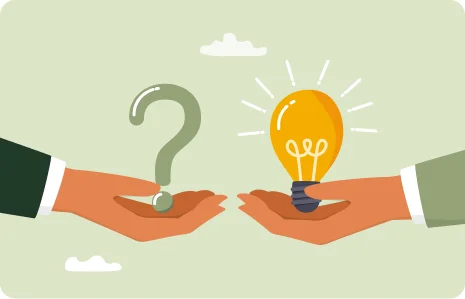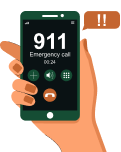Most people have heard the terms, “ADHD” and “ADD”, and these terms are often used jokingly to describe difficulties in getting things done. However, the experiences of people who have “attention-deficit-hyperactivity disorder” and “attention-deficit-disorder” (ADHD/ADD) rise above normal human struggles with focus. ADD/ADHD occurs when the concentration of two neurotransmitters: dopamine and norepinephrine are too low in the prefrontal cortex (the front part of the brain). This impairs a person’s “executive functioning” which is their ability to control impulses and attention.
ADD/ADHD is debilitating
With decreased control over their impulses and ability to focus, a person will have problems completing routine tasks and responsibilities. This leads to frustration, underachievement, and disapproval from others. In fact, adults with ADD/ADHD will often be less successful in their relationships, finances, and careers and can even be more vulnerable to addictions because of this disorder.
How to recognize ADD/ADHD
The three hallmark symptoms associated with ADD/ADHD are inattention, hyperactivity, and impulsivity. These traits can be recognized when a person has these types of problems:
- Inability to accomplish “boring” tasks like paying bills or cleaning
- Difficulty finishing projects
- Forgetting appointments and losing possessions
- Interrupting others
- Impulsivity and frequent “novelty-seeking”
How is ADD/ADHD diagnosed?
A provider will determine if a person has ADD/ADHD based on their history of problems with inattention, hyperactivity, or impulsivity “beyond the extent that is normal for the person’s age”. In addition, these symptoms must have been experienced over a long period of time and in multiple environments such as home, work, and school.
Treatments for ADD/ADHD
The treatment of ADD/ADHD involves increasing the levels of dopamine and norepinephrine in the prefrontal cortex and acquiring coping skills. This can be accomplished through medications, over the counter supplements, and learning attention and information management techniques. Our providers may recommend to begin treatment with an over-the-counter supplement, a prescription medication, or a combination of both.
ADD/ADHD treatment can include stimulant or non-stimulant medication
Stimulant medications are based on either methylphenidate or amphetamines and both work in a similar manner by blocking the transport of dopamine and norepinephrine thereby making these neurotransmitters more available in the brain. However, amphetamine-based medications are considered to be twice as potent as methylphenidate-based medications and more likely to cause adverse effects; therefore, an initial medication trial will typically begin with a methylphenidate-based medication.
Examples of methylphenidate-based medications include:
- Focalin (immediate release tablet, extended-release capsule)
- Methylin (immediate-release liquid)
- Ritalin (immediate-release tablet, sustained-release tablet, extended-release capsule)
- Desoxyn (sustained-release tablet)
- Aptensio (extended-release capsule)
- Concerta (extended-release tablet)
- Contempla (extended-release tablet)
- Daytrana (transdermal patch)
- Metadate (extended-release capsule)
- Quillichew (extended-release chewable tablet)
- Quillivant (extended-release liquid)
Examples of Amphetamine-based medications include:
- Adderall (immediate release tablet, extended-release capsule)
- Eveko (immediate-release capsule)
- ProCentra (immediate-release liquid)
- Zenzedi (immediate-release tablet)
- Adzenys (extended-release tablet)
- Dexedrine (extended-release capsule)
- Dyanavel (extended-release liquid)
- Mydayis (extended-release capsule)
- Vyvanse (extended-release capsule)
Non-stimulant medications also increase the amount of dopamine and norepinephrine in the brain but use pathways different from stimulants. Non-stimulants are appropriate if a person has certain medical conditions or a history of substance abuse history.
Examples of non-stimulant medications that treat ADD/ADHD include:
- Atomoxetine (brand-name: Strattera; extended-release capsule)
- guanfacine (brand-name: Intuniv; extended-release tablet)
- clonidine (brand-name: Kapvay; extended-release tablet)
- bupropion (brand-name: Wellbutrin; sustained-release tablet, extended-release tablet)
- modafinil (brand-name: Provigil; tablet)
Good nutrition can be helpful in treating ADD/ADHD
There are a number of vitamins, minerals, and amino acids that are important in brain functions associated with ADD/ADHD. A healthy diet is the most effective way for the body to obtain these components, but supplements may sometimes be needed.
- Fish Oil – also known as “essential fatty acids” is the nutritive ingredient with the most research support for positively impacting ADD/ADHD symptoms.
- L-Theanine – is an amino acid found in black, white, or green tea that increases the level of dopamine in the brain. In addition to benefitting ADD/ADHD, it also increases a person’s sense of well-being and reduces anxiety.
- Iron – is a mineral contained in red meats, fish and poultry that is required for the synthesis of dopamine.
- Vitamin C – is a vitamin that helps the body absorb iron. It is found in many fruits and vegetables (citrus fruits, tomatoes, broccoli, brussels sprouts, cauliflower, peppers, spinach, cabbage, potatoes, squash, and leafy greens).
- Vitamins B6 and B9 –are required for the synthesis of dopamine
- Vitamin B9 (folate)
- Note: some people will be better able to absorb folate from its active form: L-Methylfolate instead of its synthetic form: folic acid.
- Vitamin B6 (pyridoxine)
- Zinc - This mineral is required to metabolize a hormone called melatonin which is important in the treatment of ADD/ADHD because melatonin regulates dopamine.
- L-Dopa and L-Tyrosine are amino acids that serve as precursors to dopamine. When either of these are taken with one of the sulfur containing amino acids such as methionine, cysteine, homocysteine, or taurine it can increase the production of dopamine. However, this increase in dopamine can lead to a decrease in serotonin and should therefore include measures to simultaneously increase serotonin. It is important to work with a clinician to get the right balance and to not start certain over the counter medications without supervision as interactions and side effects can still occur.
References
American Psychiatric Association. (2013). Diagnostic and statistical manual of mental disorders (5th ed.). Arlington, VA: American Psychiatric Publishing.
Hurt, E., & Arnold, L. (2014). An integrated dietary/nutritional approach to aDHD. Child and Adolescent Psychiatric Clinics of North America,23(4), 955-64. doi:10.1016/j.chc.2014.06.002
National Resource Center on ADHD. (2018). Medications used in the treatment of ADHD. Retrieved from http://www.chadd.org/Understanding-ADHD/For-Parents-Caregivers/Treatment-Overview/Medication-Chart.aspx
Stahl, S. (2013). Stahl's essential psychopharmacology: Neuroscientific basis and practical application (4th ed.). Cambridge: Cambridge University Press
Stahl, S. (2017). Stahl's essential psychopharmacology-- prescriber's guide (6th ed.). Cambridge: Cambridge University Press.








